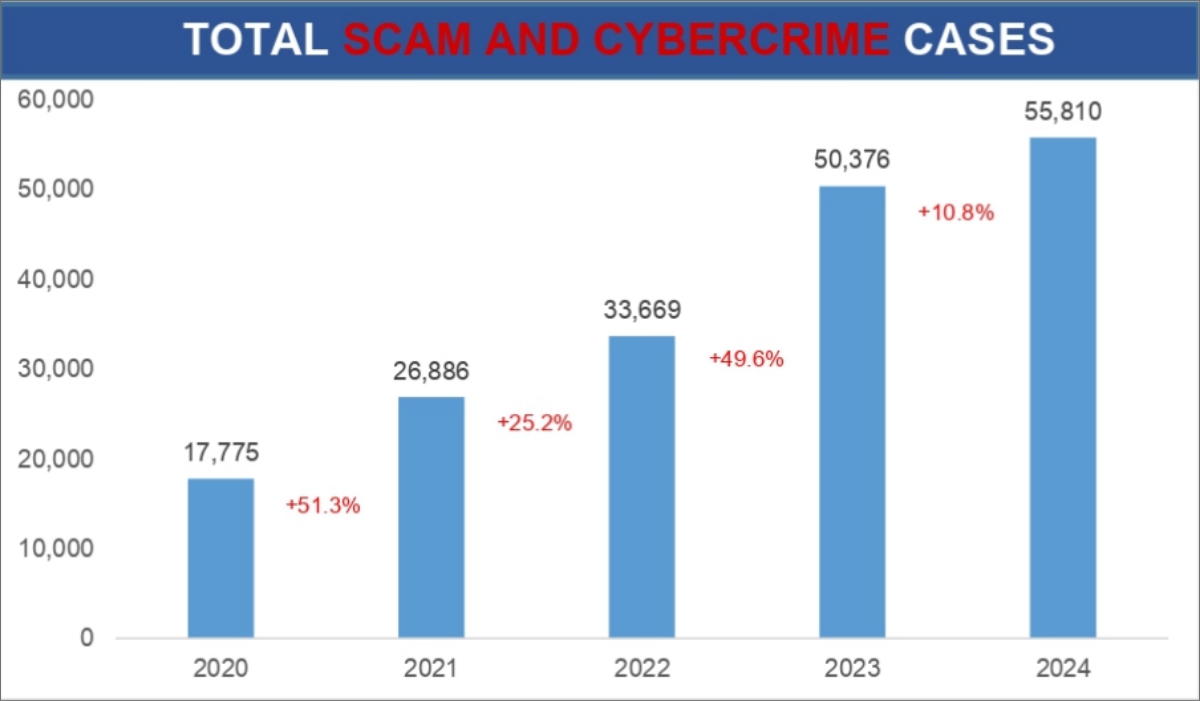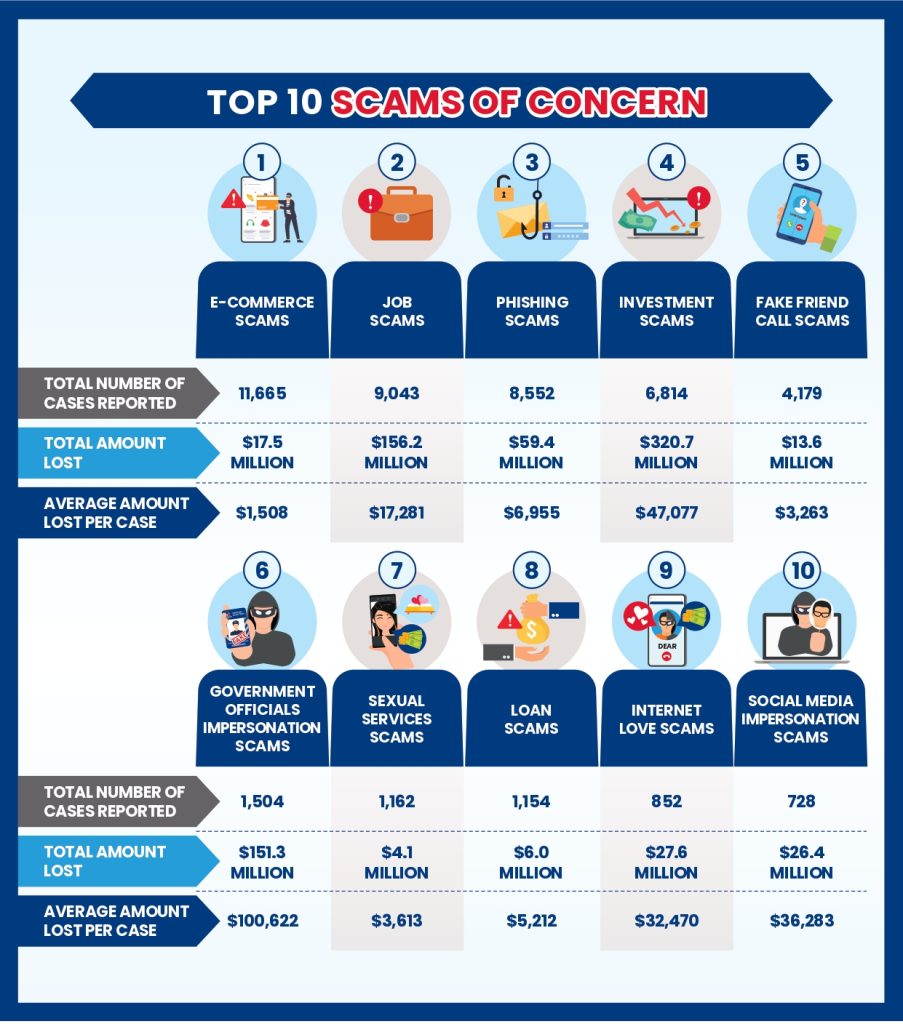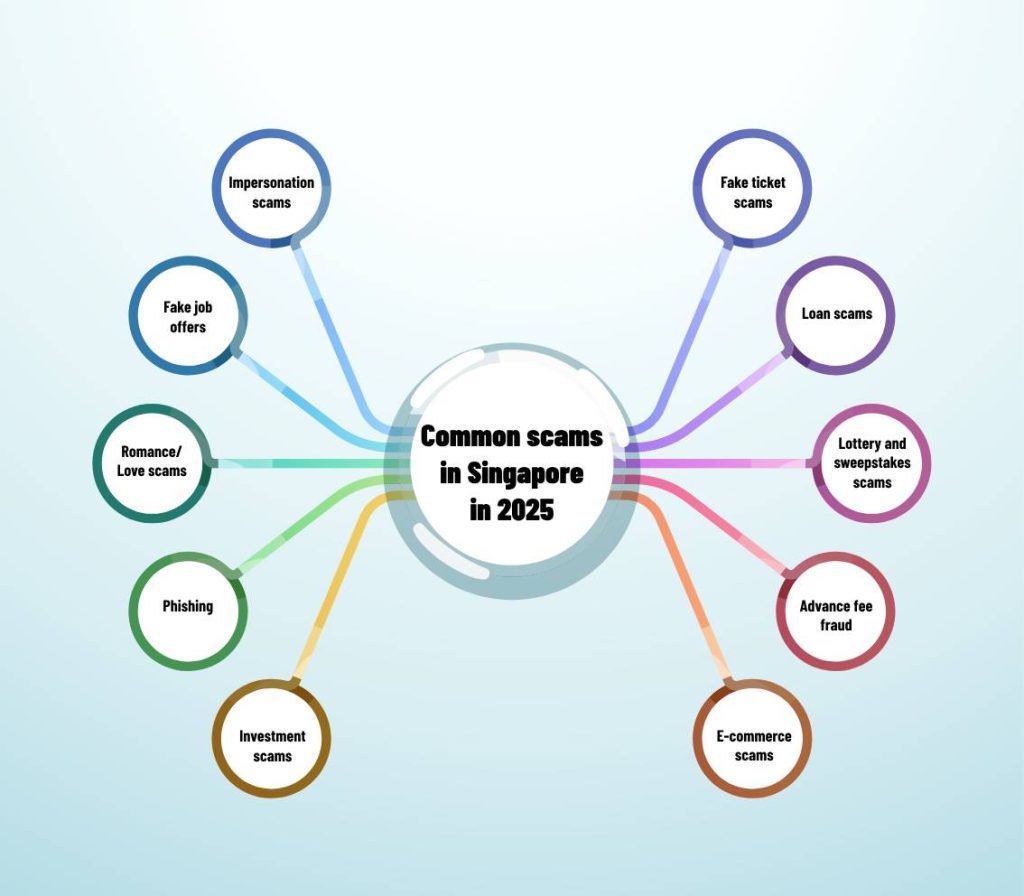
Singapore is marking its 60 years of independence this year with a series of activities. Most recently, from February 15 to 28, was Exercise SG Ready 2025, a signature event of SG60. The exercise invited Singaporeans to reflect on the crises and disruptions that we have gone through in the last six decades, and encouraged us to prepare for what we may face in the future.
Exercise SG Ready 2025 was held at various locations as part of the Total Defence campaign. The focus was on strengthening Singaporeans’ preparedness for power disruptions caused by cyberattacks. It also got individuals, communities and businesses to ask how ready we are, to address such incidents.
Here are some useful resources to support contingency planning and preparation:
Singapore’s Scam Cases Continue To Rise
The rising tide of scams in Singapore continues unabated. According to the statistics released by the Singapore Police Force on February 25, from January to December 2024, there were 55,810 scam and cybercrime cases – an increase of 10.8% from 2023. Of these, the number of scam cases grew to 51,501, up 10.6% from a year earlier. The total amount lost was at least S$1.1 billion, or up 70.5%. Some $182 million of scam losses were recovered, which left the bulk of the $930 million lost.

Cryptocurrency loses formed a larger percentage of scam losses, accounting for about 24.3% of total scam losses in 2024, compared to 6.8% in 2023. More than 70% of the cases saw less than $5,000 in losses. The median loss per case was $1,389 in 2024, down 12.6% from 2023.
The increase in total amount lost in 2024 was driven by a small number of cases with very high losses. Scam cases with losses of at least $100,000 made up 3.3% of the number of scam cases last year, but they accounted for 70.8% of scam losses. Four cases accounted for $237.9 million in losses.
E-commerce scams continued to trend upwards, along with phishing scams, investment scams and government official impersonation scams.

The authorities are urging people not to share their banking and card credentials, and also to take the “ACT” (Add, Check, Tell) precautionary measures:
ADD Add the ScamShield app to the mobile device and activate security features, such as digital tokens for banking apps. Lower card transaction notification thresholds to an adequate level for daily spending. Disable the card for overseas use when it is not needed.
CHECK Check your SMS OTP and notifications to ensure that your credit cards are not being provisioned to a mobile wallet without your permission. Call your card issuing bank immediately if this has happened. Be wary of online vendors. Do not click on unsolicited hyperlinks or scan unknown QR codes.
TELL Tell the authorities, family, and friends if or when you encounter scams. Report and block any suspected scam accounts and chat groups. Where appropriate, call your bank or card issuer to report and block any fraudulent transactions, and make a police report.
Moving into 2025, these are the more common scams to look out for, according to Scam.SG.
